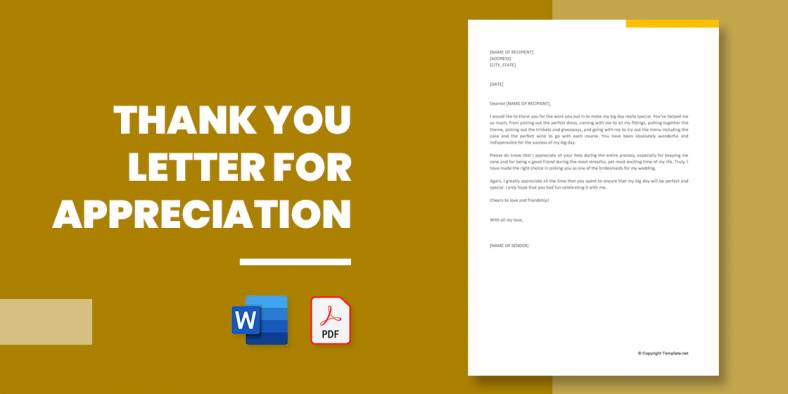
Thank You Letter for Appreciation – 19+ Free Word, Excel, PDF Format Download!
Letters expressing words that convey appreciation is a methodology that has been in existence since time immemorial yet many of…
Jan 17, 2025
A meeting appointment letter is a formal documents used to schedule a meeting between two or more parties. It serves as an official invitation and confirmation of the details of a meeting, ensuring all participants are informed and agree on the time, place, and purpose of the gathering. Typically, this letter includes the proposed date and time, location, agenda, and any other relevant details necessary for the participants to prepare effectively. Meeting appointment letters are crucial in professional settings as they help manage schedules, avoid misunderstandings, and facilitate efficient communication. They can be addressed to clients, business partners, team members, or potential collaborators, making them versatile tools in business communications.
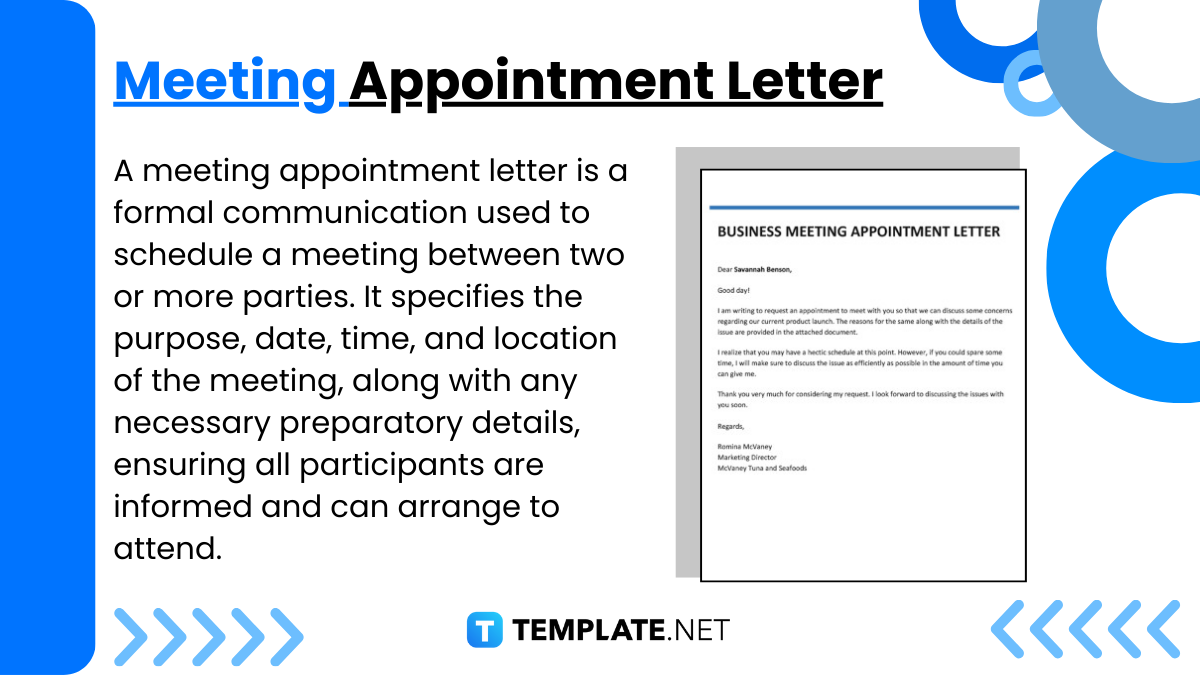
Crafting an effective meeting appointment letter is crucial for ensuring clarity and professionalism. Here’s a structured format to guide you in creating a well-organized and informative meeting appointment letter:
Start with your name, position, and company name, followed by your address and contact information. This should be positioned at the top left of the letter.
Place the date on which the letter is written directly below your contact information.
Write the recipient’s name, title, company, and address. Ensure you have the correct details to personalize the letter and demonstrate professionalism.
Open with a formal greeting using the recipient’s proper title and last name, such as “Dear Mr. Smith,” or “Dear Dr. Johnson.”
Optionally, include a brief, clear subject line that summarizes the purpose of the letter, like “Meeting Appointment Request.”
Begin the body of your letter by stating the purpose directly. For example, “I am writing to schedule a meeting to discuss…”
Provide the specific details of the meeting:
Politely ask the recipient to confirm their availability for the meeting or suggest an alternative time if the proposed one isn’t suitable.
Include any relevant information the recipient needs to prepare for the meeting, such as documents to bring, preliminary tasks, or the list of participants.
End the letter with a courteous closing statement, such as “Looking forward to your reply,” followed by “Sincerely,” or “Best regards,” and your full name and signature.
If you are including additional documents with the letter, list them under an “Enclosures” section at the end.
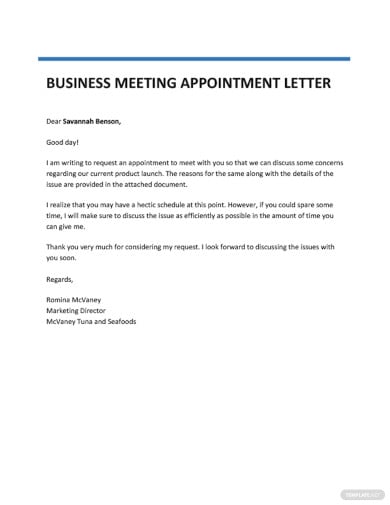
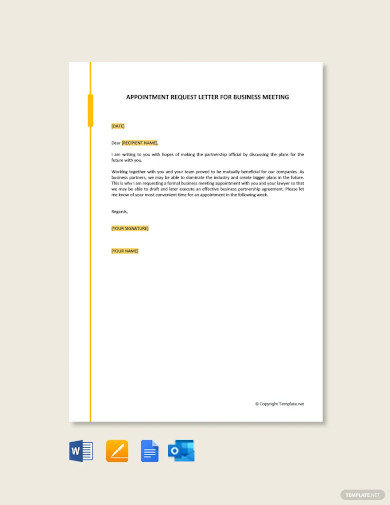
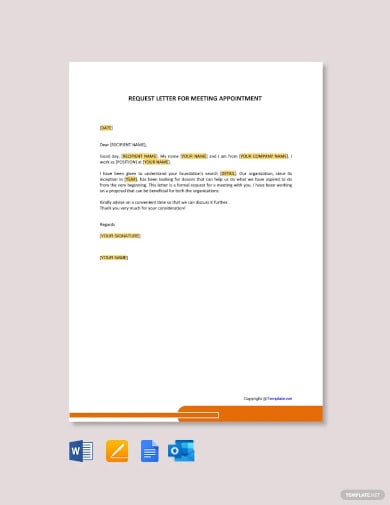
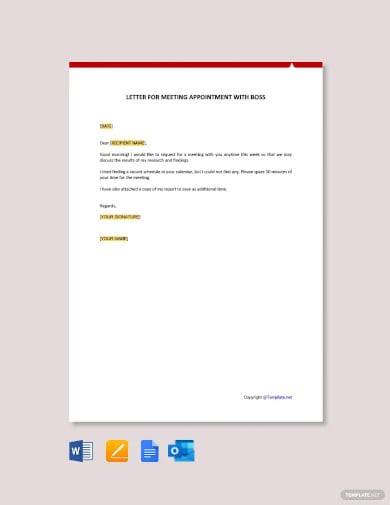
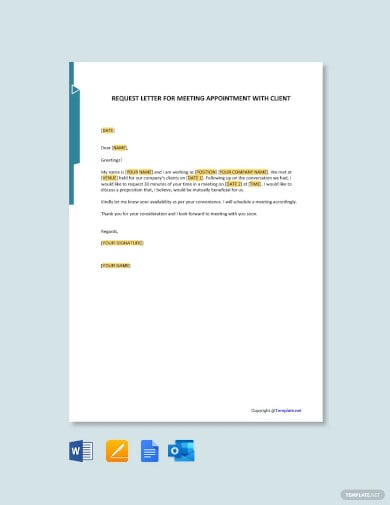
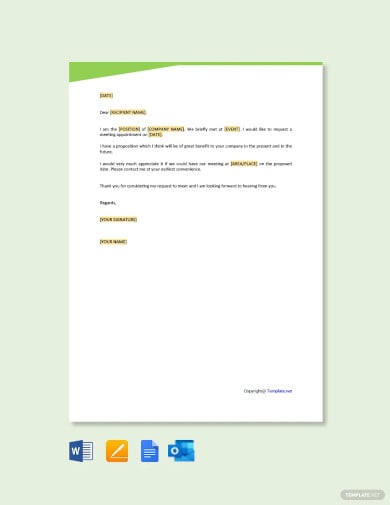
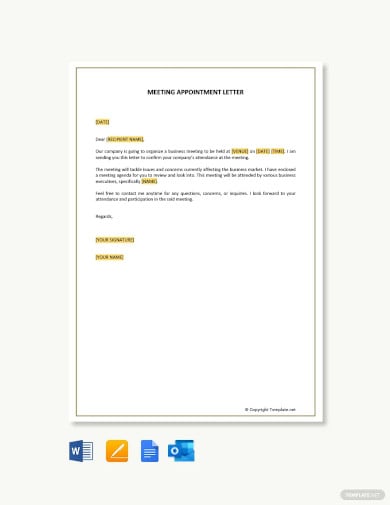
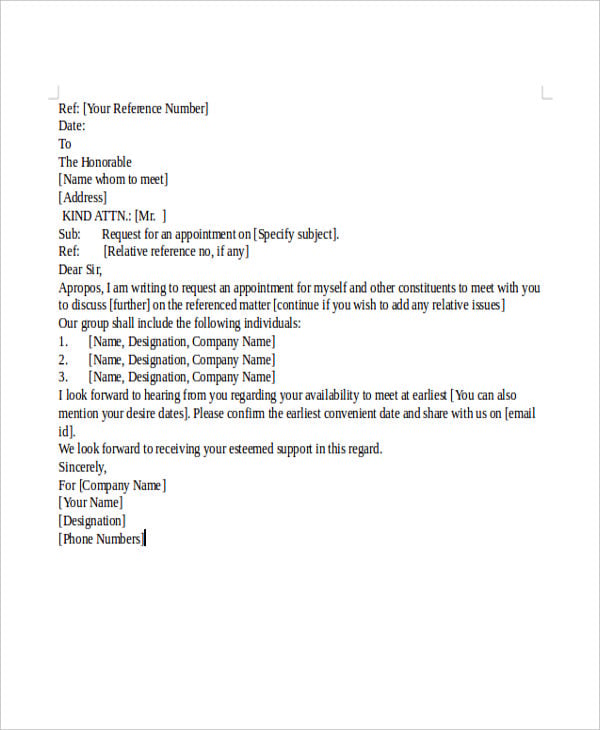 masteradviser.blogspot.in
masteradviser.blogspot.in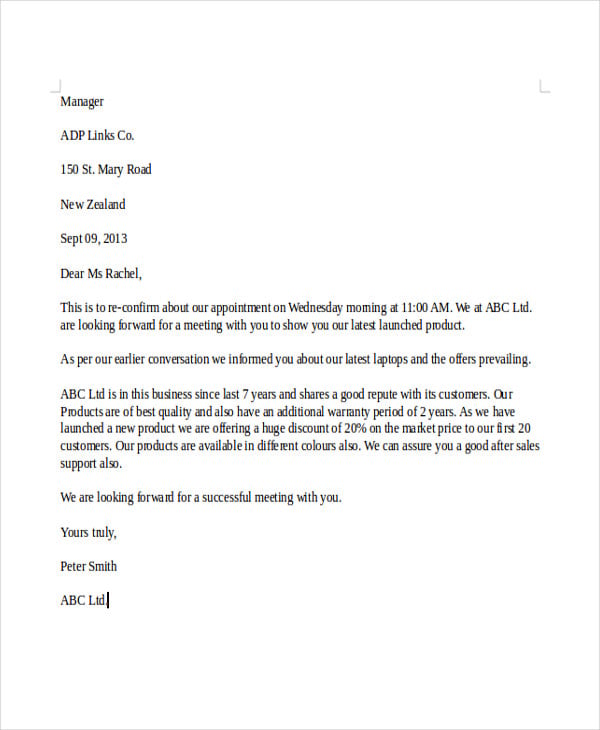
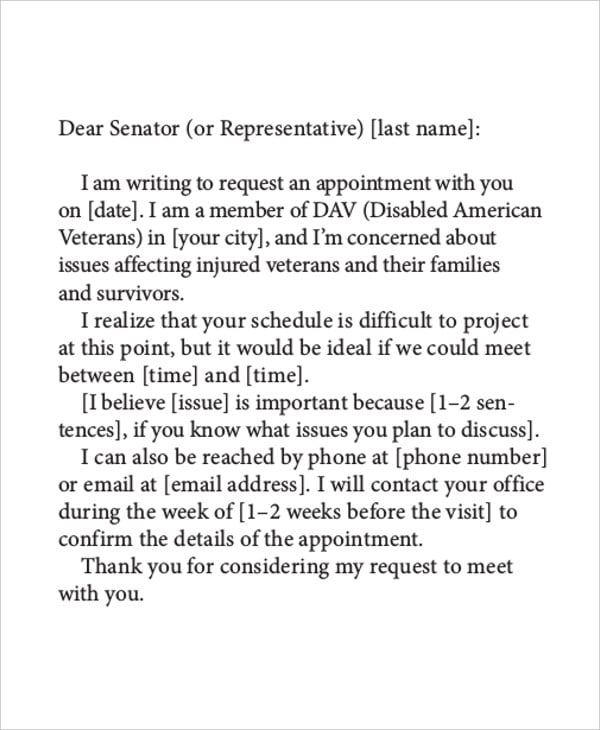 dav.org
dav.org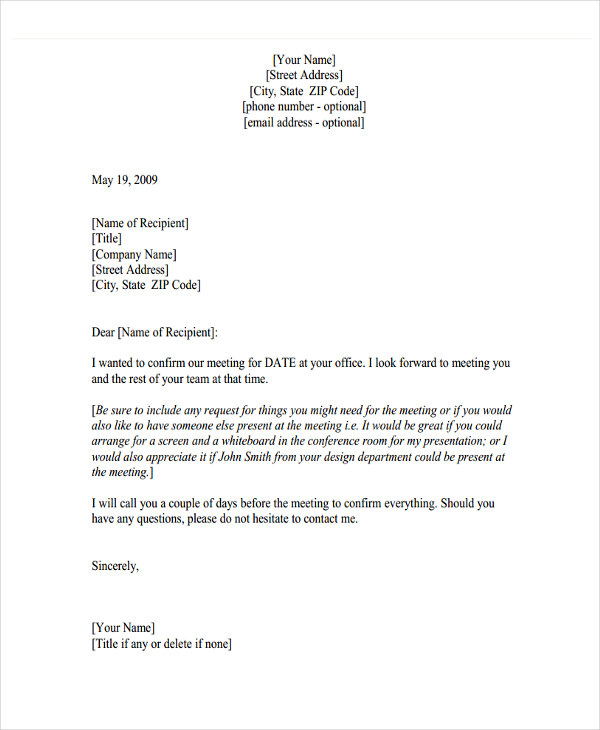 findlegalforms.com
findlegalforms.comGenerally, appointment letters come in a variety of types such as job appointment letter templates, student appointment letters, and the topic at hand which is the meeting appointment letter. The essential elements of a meeting appointment letter are the following:
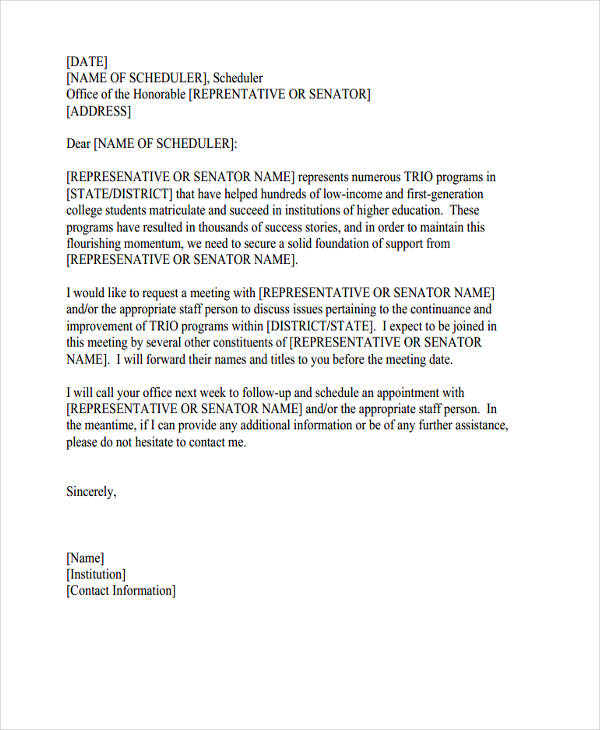 neoaonline.org
neoaonline.org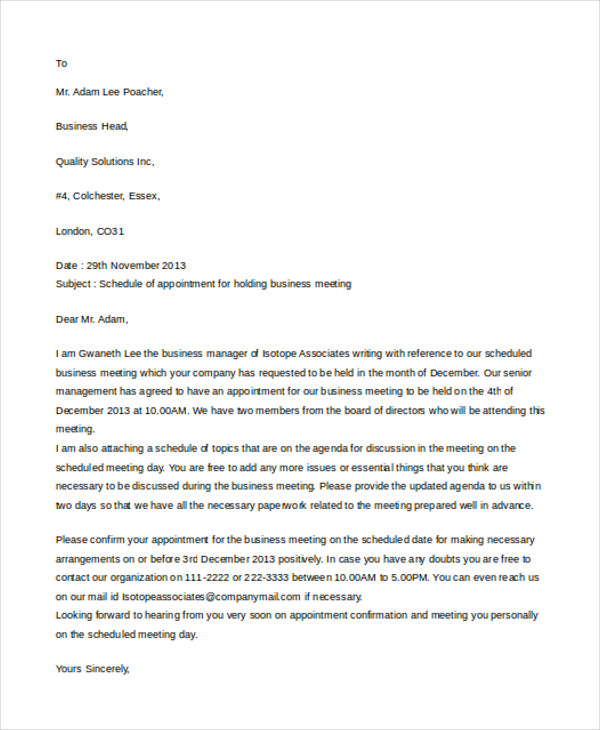
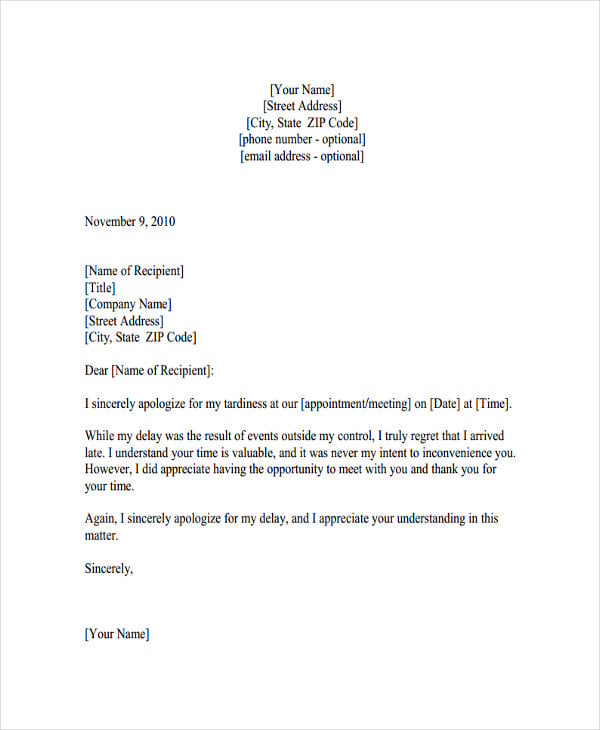 findlegalforms.com
findlegalforms.com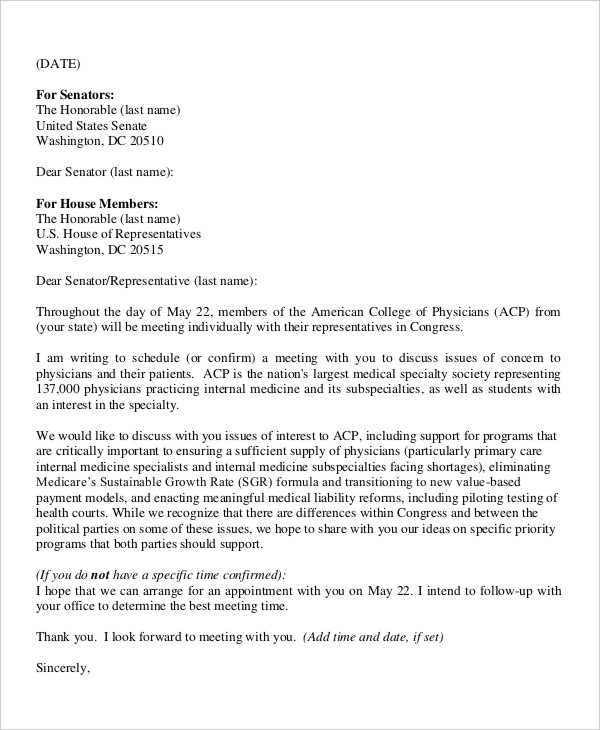 acpservices.org
acpservices.orgA well-crafted meeting appointment letter should include specific elements to ensure that it effectively communicates the necessary details and confirms the meeting professionally. Here are the essential components to include:
Include both the sender’s and recipient’s contact information at the top of the letter. This should consist of full names, titles, addresses, and phone numbers.
The date of writing the letter should be clearly stated to keep a record of correspondence and for reference purposes.
Address the recipient formally using their proper title (Mr., Ms., Dr., etc.) followed by their surname. If you are unsure about the title or gender, use their full name or a general greeting such as “Dear [Full Name].”
A concise subject line is helpful, especially in professional settings, to immediately inform the recipient about the purpose of the letter, e.g., “Appointment for Project Discussion.”
Clearly state the main objective of the meeting early in the letter. Explain briefly why this meeting is necessary and what you hope to accomplish.
Include all relevant details about the meeting:
If applicable, briefly outline the agenda or the topics to be discussed. This prepares the recipient and ensures that the meeting remains focused and productive.
Politely ask the recipient to confirm their attendance at the meeting or to suggest an alternative time if the initial proposal is inconvenient.
If the meeting requires the attendee to prepare anything in advance, bring specific documents, or involve other participants, mention this clearly.
Conclude your letter on a polite note, expressing anticipation of the recipient’s participation and how you value their input.
End with a formal closing, such as “Sincerely” or “Best regards,” followed by your handwritten signature (if sending a hard copy) and typed name.
Note any additional documents included with the letter, which might be reference materials or further documentation needed for the meeting.
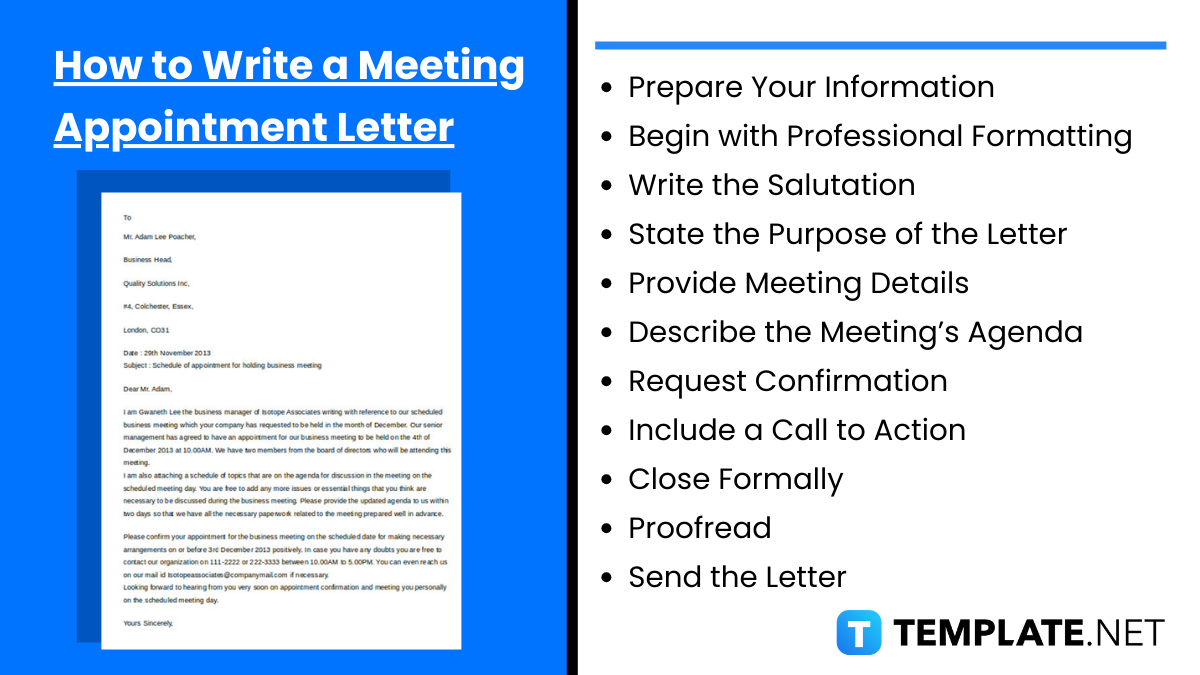
Writing a meeting appointment letter involves clear communication and attention to detail to ensure the recipient understands the purpose, timing, and requirements of the proposed meeting. Here’s a step-by-step guide on how to compose an effective meeting appointment letter:
Gather all necessary information including the purpose of the meeting, the location, date and time, participants, and any specific discussion points or objectives.
Use a formal business letter format starting with your contact information at the top, followed by the date, and then the recipient’s contact information. If you are using company letterhead, some of this information may already be included.
Start with a formal greeting using the recipient’s appropriate title and last name, such as “Dear Mr. Johnson,”. If you’re unsure about the recipient’s gender or marital status, use their full name, e.g., “Dear Jordan Smith,”.
Open the letter by directly stating its purpose. For example: “I am writing to schedule a meeting regarding [topic].” Be brief but specific about the reason for the meeting.
Detail the proposed date, time, and location of the meeting. If it’s a virtual meeting, include instructions or links necessary to join. Consider offering alternative times or asking for their input to confirm a time that works for all parties.
Briefly outline the agenda or topics to be discussed during the meeting. This helps set expectations and allows participants to prepare adequately.
Politely ask for confirmation of their availability for the meeting, or if they need to suggest another time. For example, “Please confirm your availability for this meeting or propose an alternative time that suits your schedule.”
Encourage a response by a specific date or provide contact information for any questions. For example, “Kindly confirm your attendance by [date]. Should you have any questions, feel free to contact me directly at [phone number] or [email].”
End the letter with a formal closing line such as “Sincerely,” followed by your full name and title. If sending a printed letter, include your signature above your typed name.
Review the letter for any spelling, grammar, or formatting errors to ensure it’s professional and clear.
Choose an appropriate method to send the letter, whether via email, a digital platform, or traditional mail, depending on the formality and context of your meeting.
A meeting appointment letter is a formal document used to schedule a meeting with one or more parties. It serves as a written confirmation of the meeting, detailing the purpose, time, date, and location of the appointment, as well as any relevant agenda items.
To write a meeting appointment letter:
A meeting appointment letter should include:
While not all meetings require a formal appointment letter, they are recommended for business and professional settings, especially when involving external parties or important stakeholders. They help ensure that all participants are clear about the details and purpose of the meeting, reducing misunderstandings and no-shows.
To ensure your meeting appointment letter is effective:

Letters expressing words that convey appreciation is a methodology that has been in existence since time immemorial yet many of…
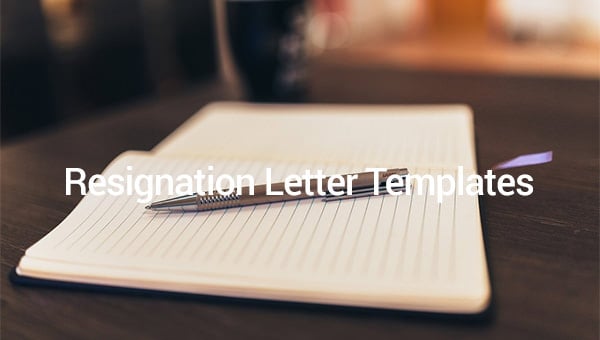
Always have your letter written on time before the day you want to quit the job. A period of two…
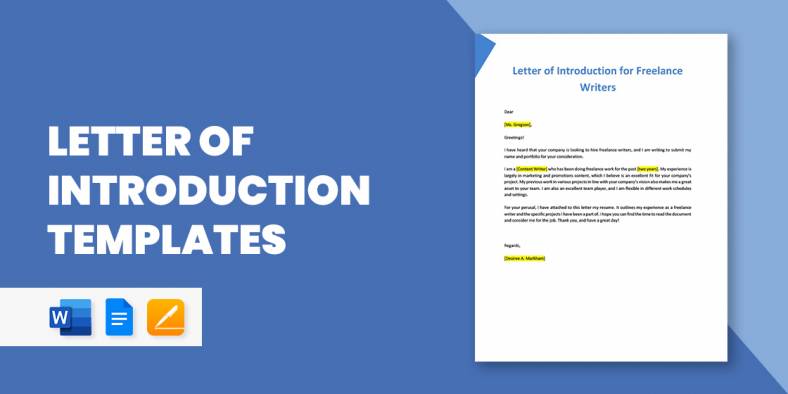
It isn’t easy to talk to someone you have only met for the first time. Opening up to them, especially…
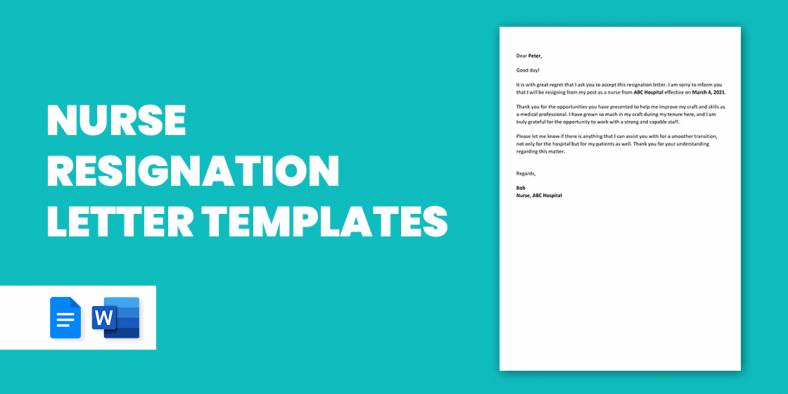
There will always come a time when a nurse decides to leave an institution and move on to other opportunities,…
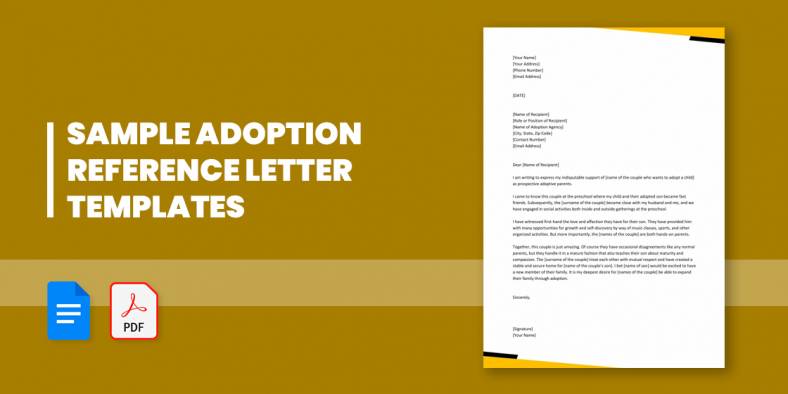
Do you want to adopt a child or a sister and brother and become the best parents? You may have…

From time to time, you may be called upon to write a reference letter for a colleague. In that case,…
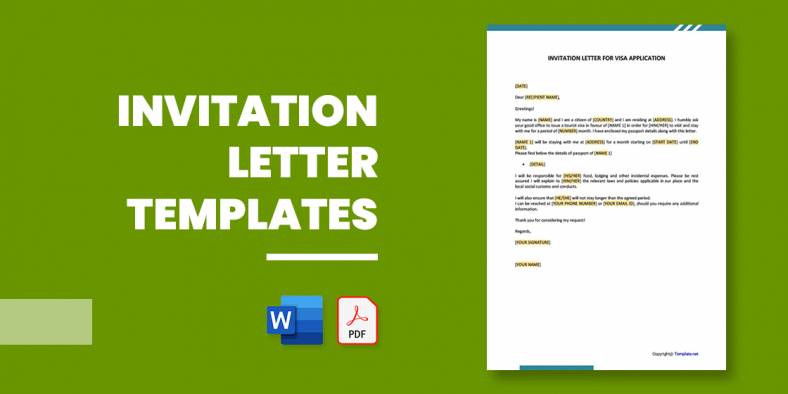
How to Write Invitation Letter Heading Living in a fast-paced world is never easy, but thanks to modern-day internet technology,…
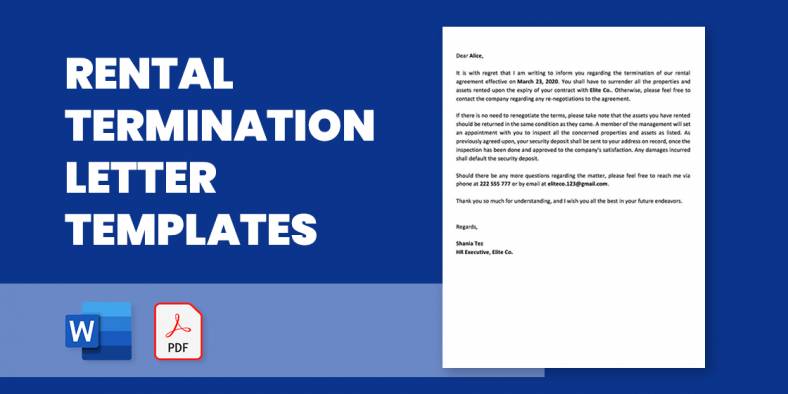
Writing a termination letter is not easy. The situation is usually further complicated if the parties involved in termination are…
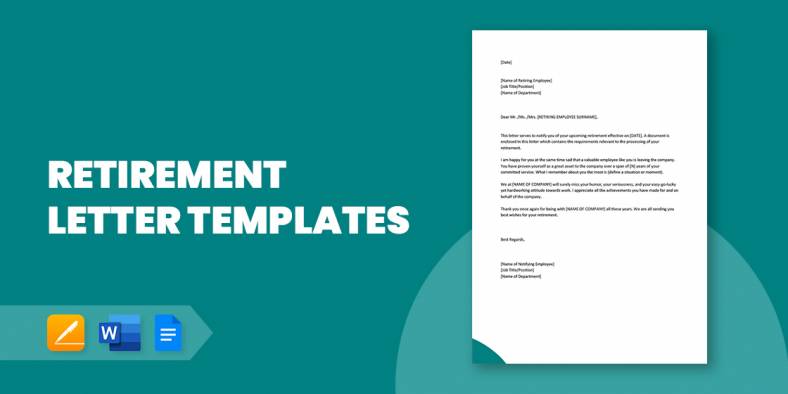
When the bell to put away your work cloth rings, you know it is time to pick up a retirement…